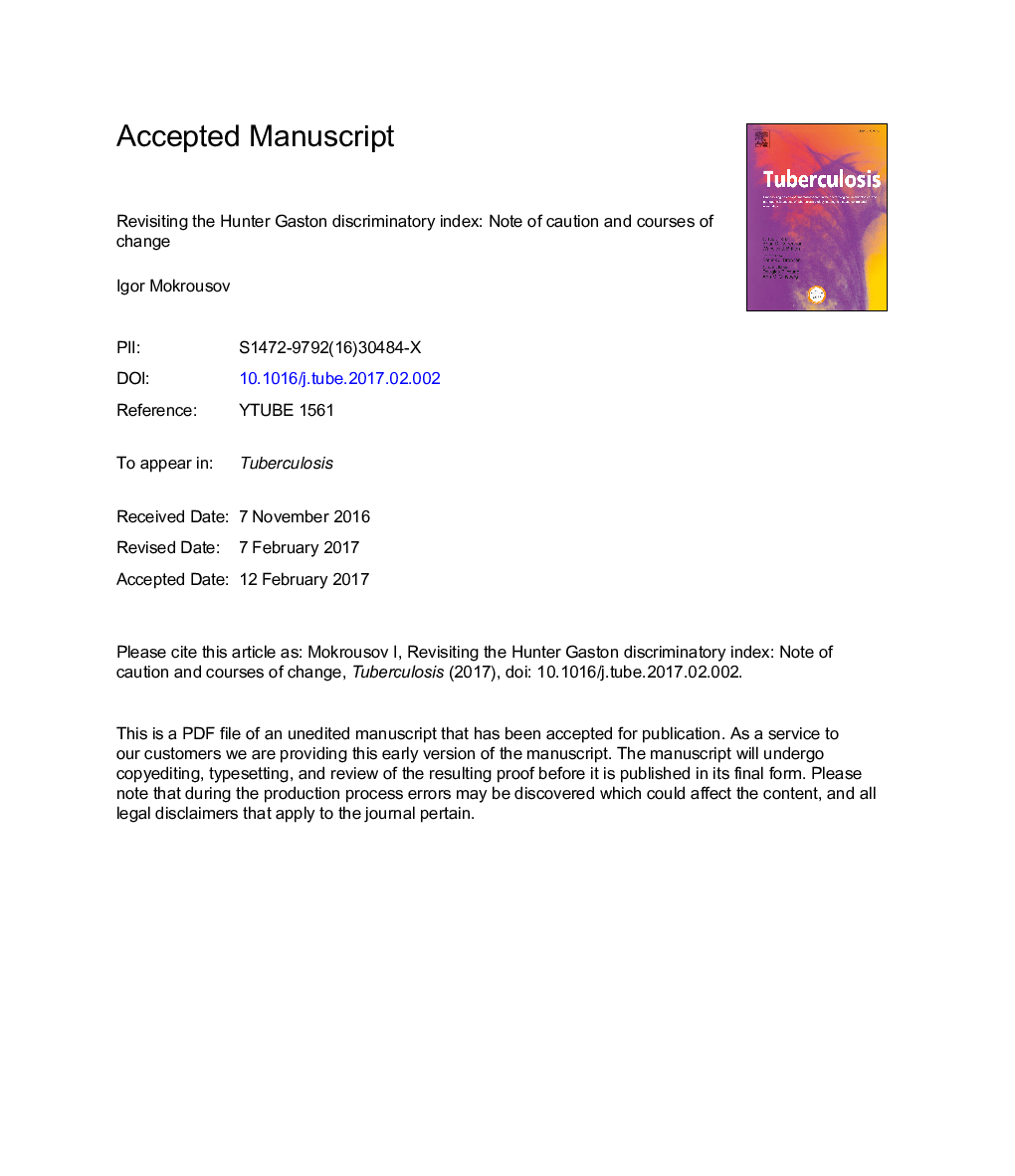| Article ID | Journal | Published Year | Pages | File Type |
|---|---|---|---|---|
| 5536157 | Tuberculosis | 2017 | 13 Pages |
Abstract
Hunter Gaston Discriminatory Index (HGDI) is a widely used estimator of discriminatory power of genotyping methods and diversity of molecular markers in bacterial pathogens, including Mycobacterium tuberculosis. In my opinion, the index is somewhat misleading: a closer look at common practice and particular studies reveals that values in the range of 0.6-0.9 are modest but uncritically perceived as high. I propose and discuss three courses of change: (i) to continue using HGDI but be aware of the true meaning behind its value and increase a threshold of acceptable resolution to the more adequate values of 0.90-0.99, depending on study design; (ii) to turn to other known indices of diversity (e.g., Shannon index), in order to complement HGDI; (iii) to develop new, intuitively more realistic estimator.
Keywords
Related Topics
Life Sciences
Immunology and Microbiology
Applied Microbiology and Biotechnology
Authors
Igor Mokrousov,
